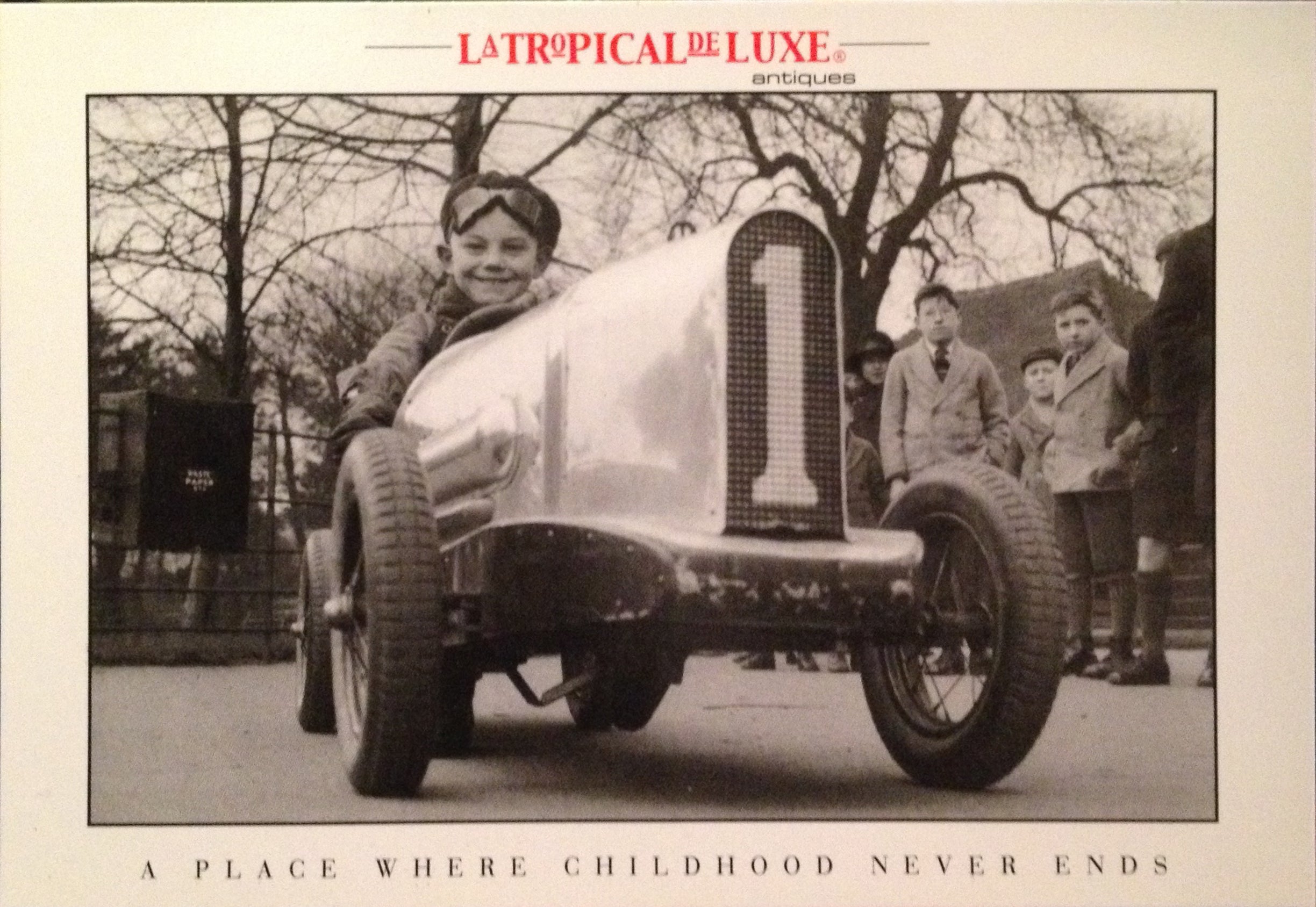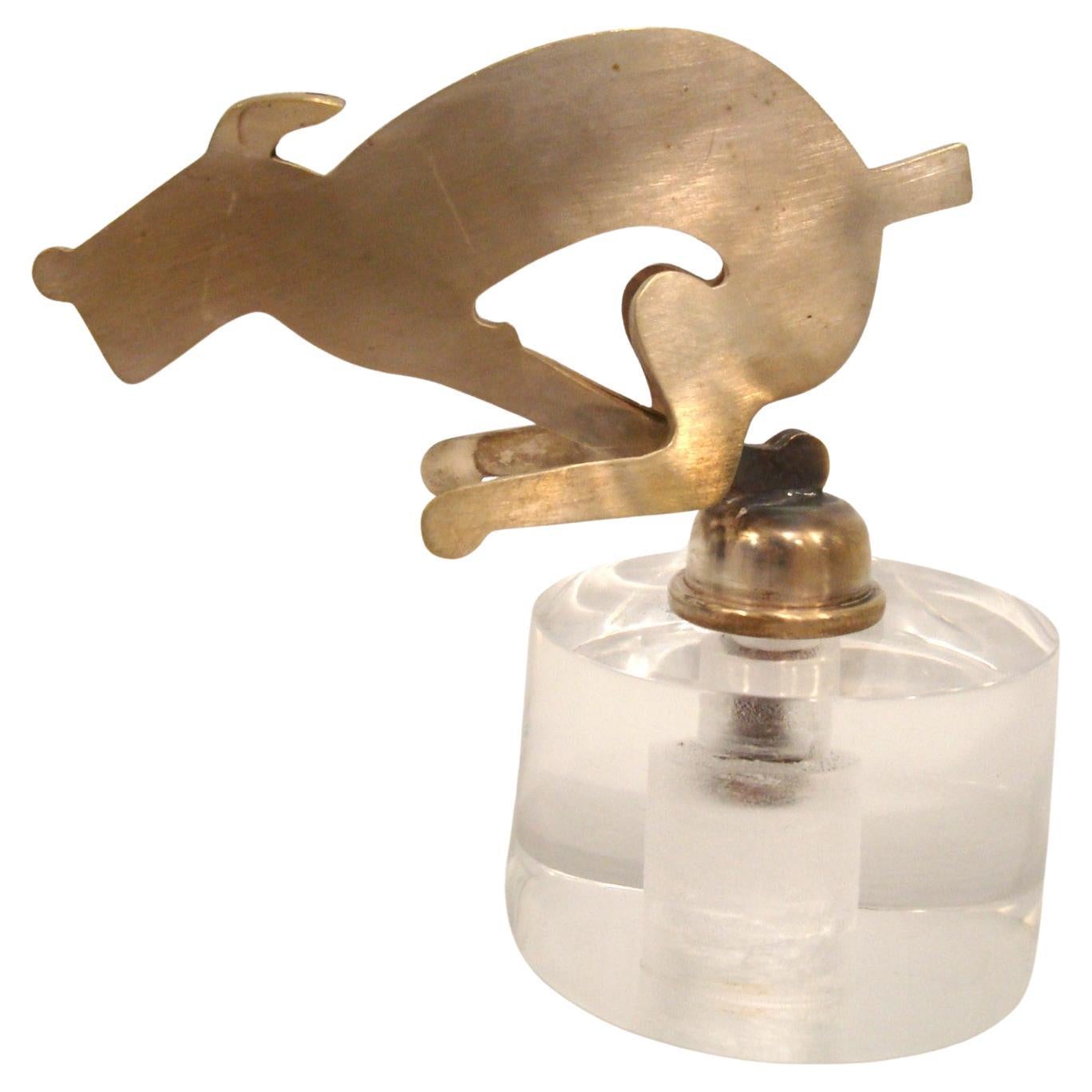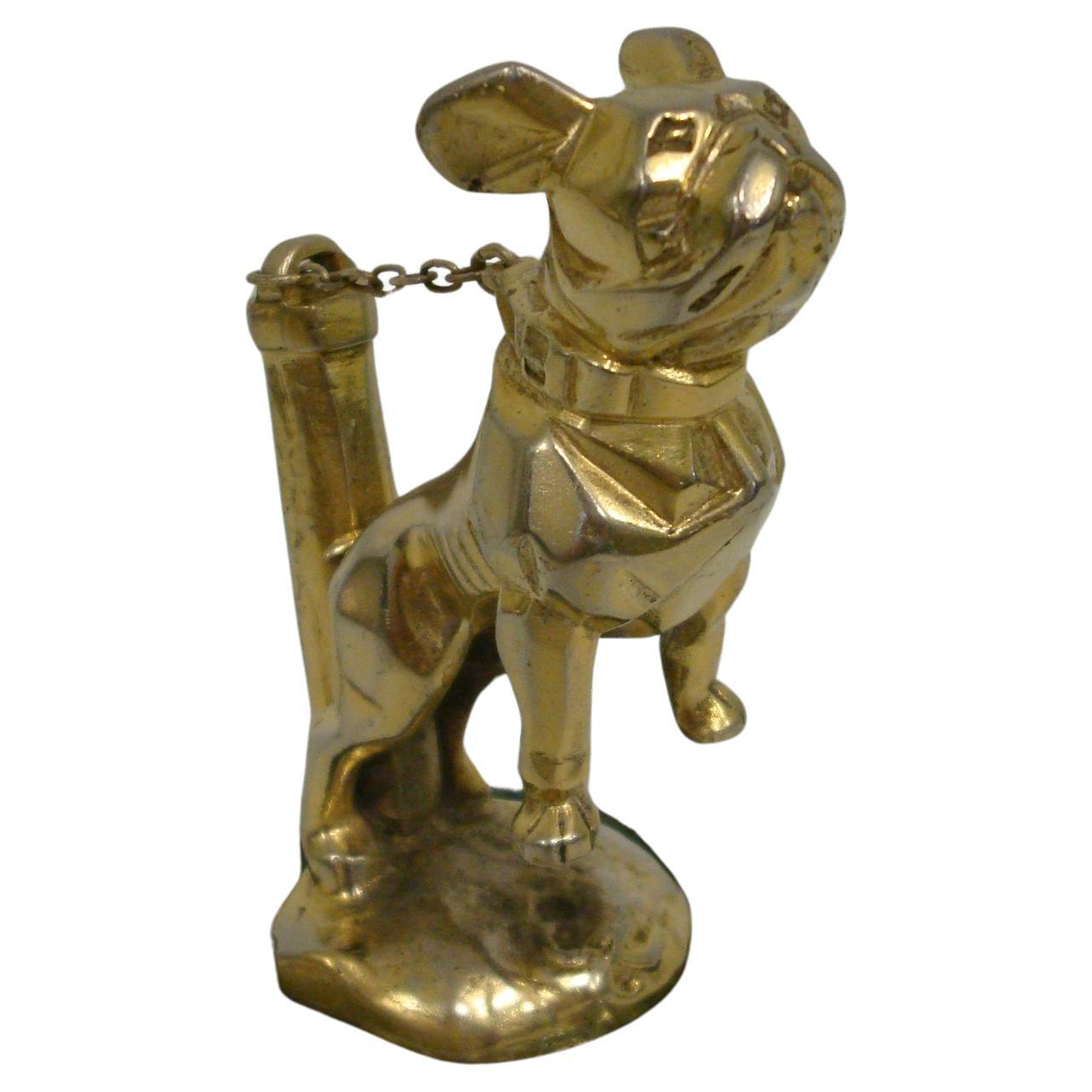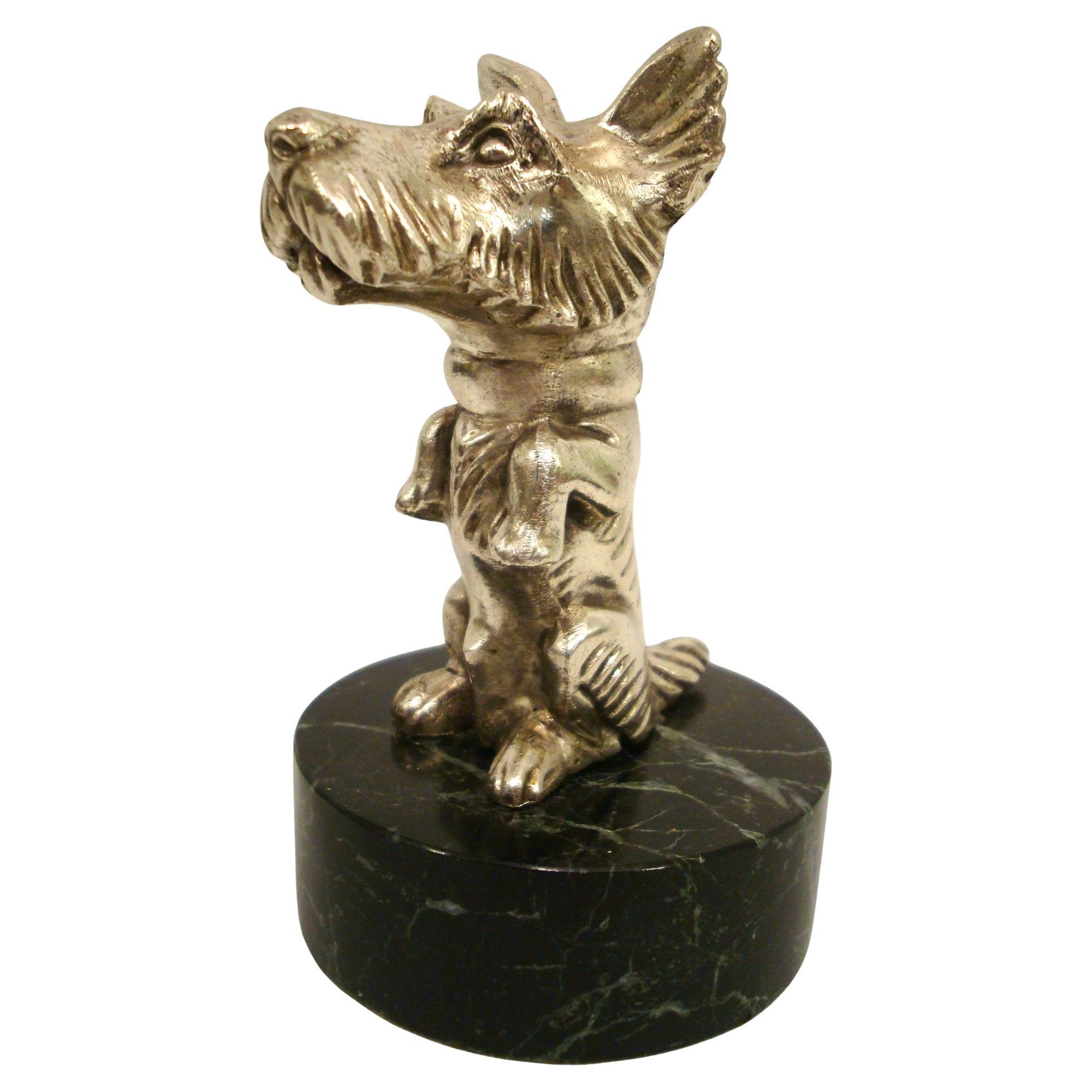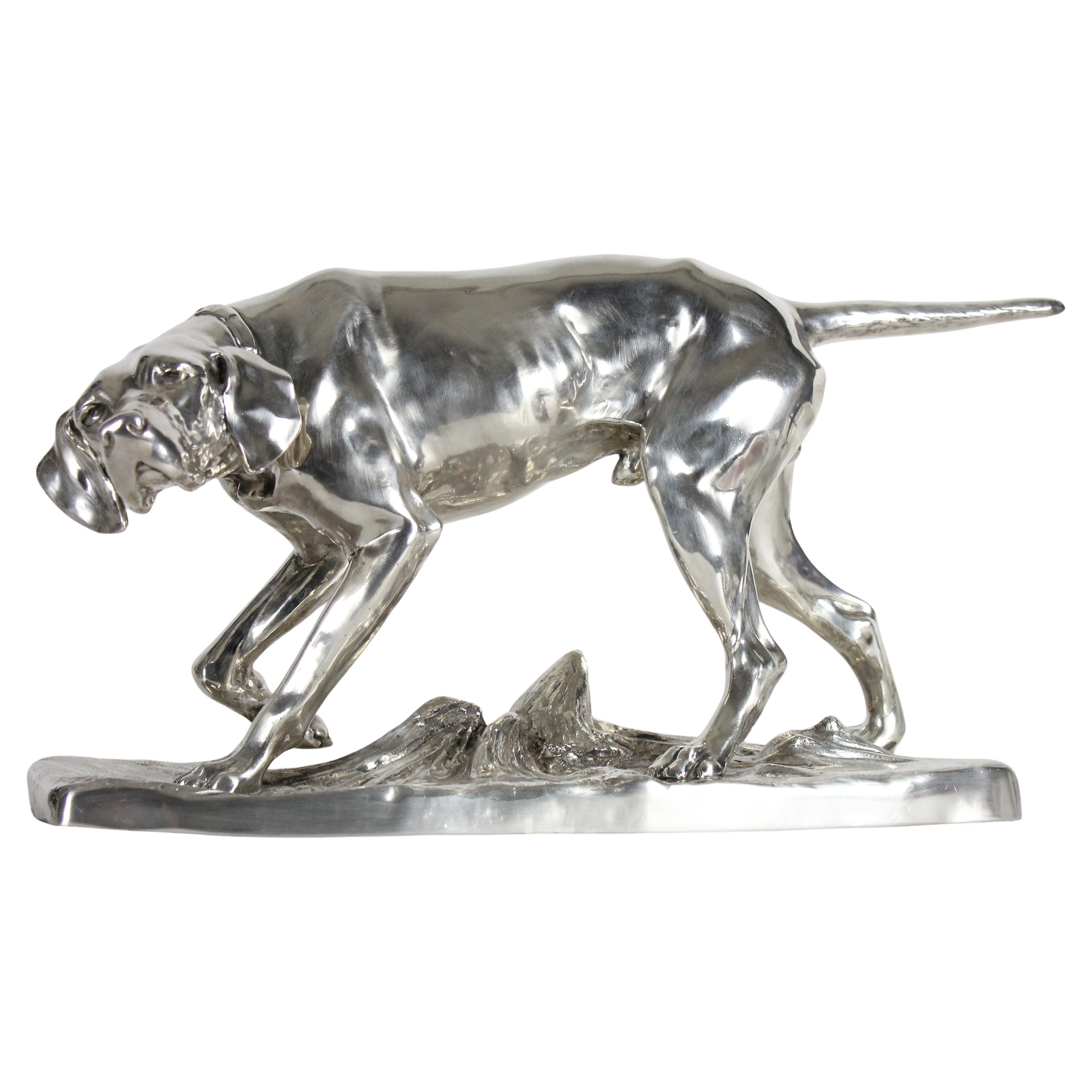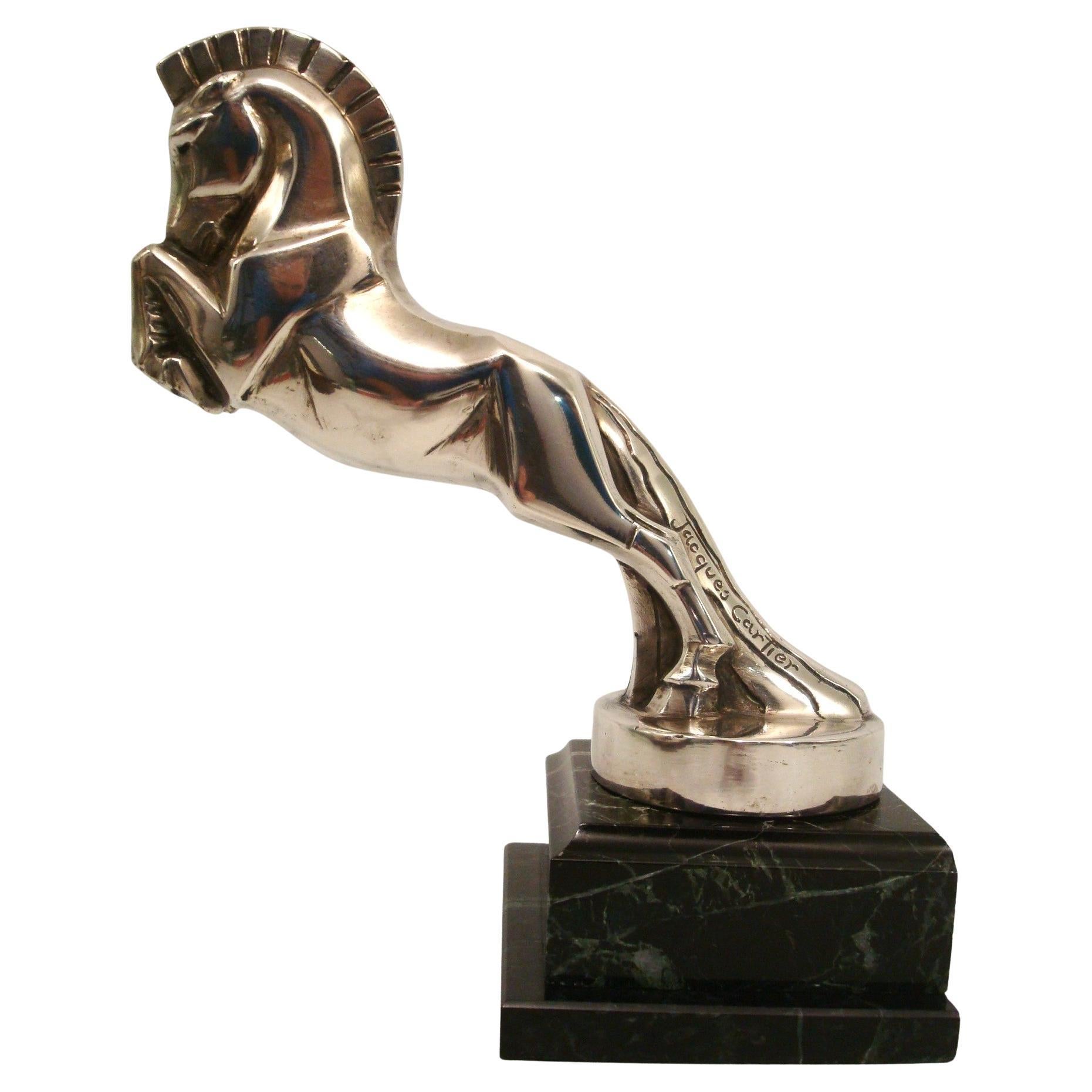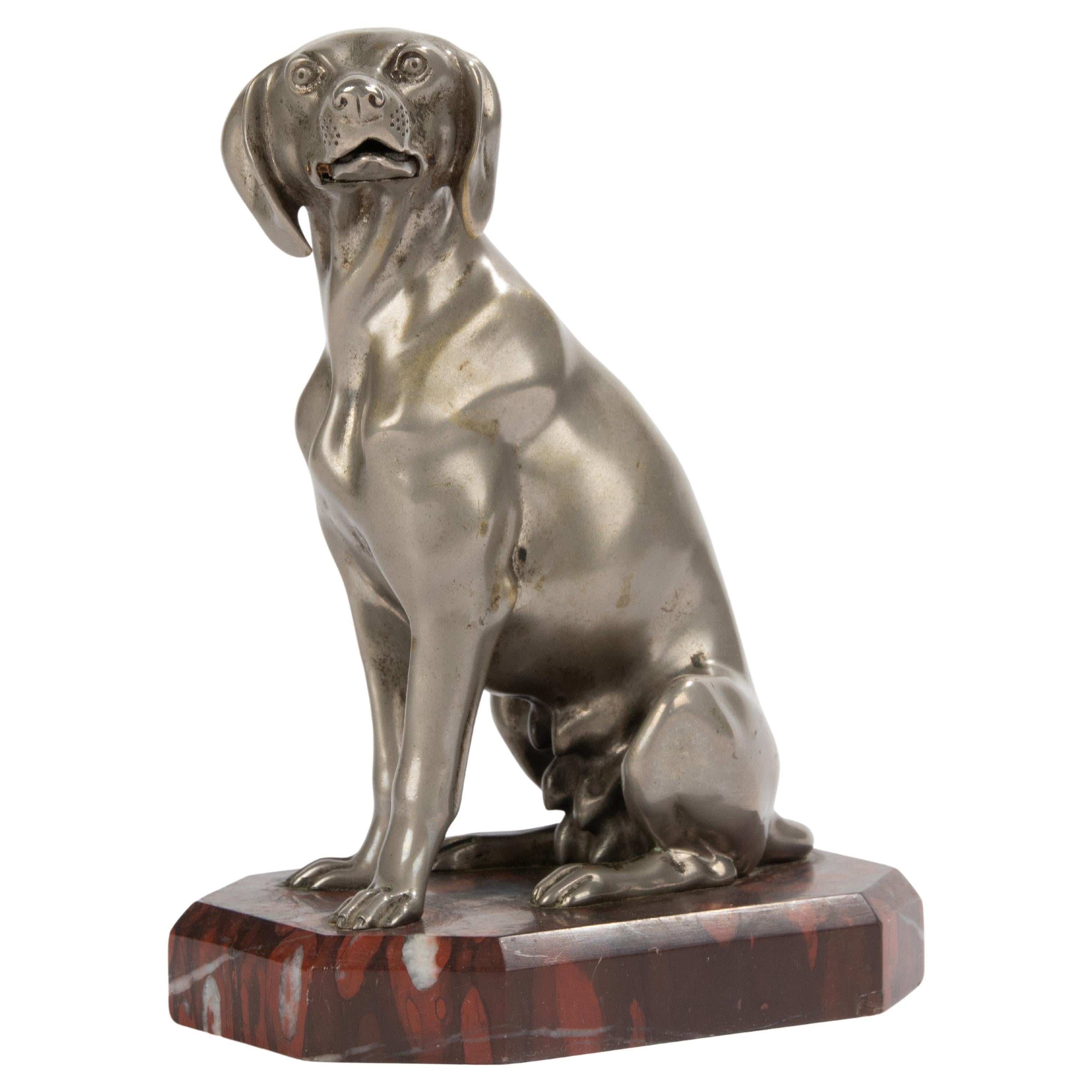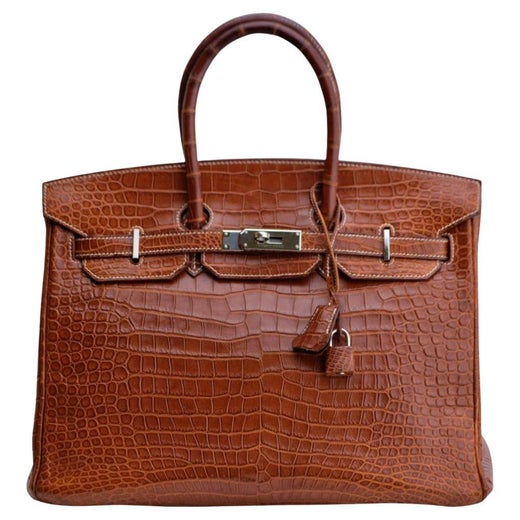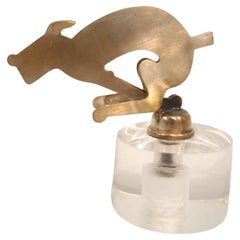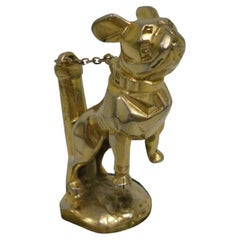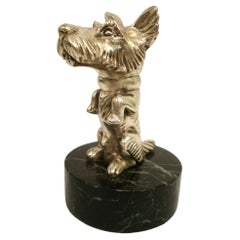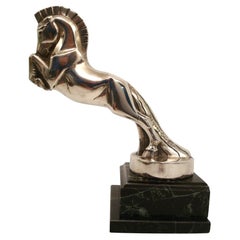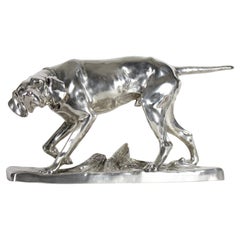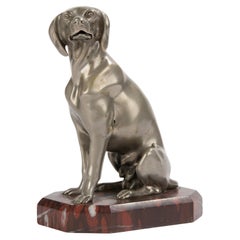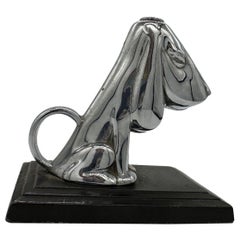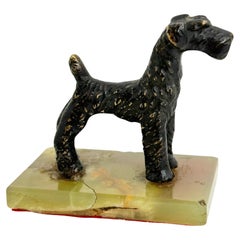Art Deco Hermès Paris "Ric et Rac" Dogs Car Mascot / Hood Ornament. Pol Rab 1920´s.
Pol RAB (1898-1933) "Ric et Rac"
Car Mascot by Pol Rab, exclusive For Hermès, Circa 1920s. Marked "Hermès Paris" and artist signature Pol Rab. Inspired by the artist's cartoons published in the newspaper "Le Rire" at the end of the 20´s. Silvered bronze. Mounted on a marble base. The medals on the dog´s collars say Ric & Rac.
Perfect Gift for any vintage & antique car fan, any automobilia collector.
Car be used as a desk paperweight.
The Bronze hood ornament measures 10 cm aprox 10 inch. including the base it measures 13.5 cm.
Pol Rab – Creator of Ric and Rac
Paul Abraham, born in Paris, 25-08-1898 and tragically died in February 1933 at the age of just 35. He used the pseudonym Pol Rab.
French artist and designer, caricaturist and painter working during the art deco period. Although Pol Rab is best remembered for his canine cartoon characters which he named Ric and Rac and who were the central characters in his albums, Pas Pour Jeunes Filles, he also designed posters for the theatre and contributed to magazines and other editorial works.
His cartoon series Ric and Rac also featured in the Le Rise French newspaper during the 1920’s, he also contributed to Grand Hebdomadaire Pour Tous – The Grand Weekly for All – a satirical magazine in Paris, founded in 1929 which continued to its last issue in 1944.
Interestingly, and sadly, it is possible that the magazine and some of Pol’s colleagues at the paper were later the subject of interest to the Gestapo in 1944 – and possibly arrested for either something drawn in the magazine or maybe in connection with the Resistance.
Also between 1930 and 1934 the magazine published a series of seven short stories and a chapter of the autobiography written by Arthur Conan Doyle.
There was a big following for Ric and Rac items and many commercial items were produced. These included bookends, powder bowls, table lamps, clocks, picture frames, a shoe polish tin, and other tin ware, brooches, bangles, soft toys, car mascots, pictures and posters – showing the naughty terrier dogs.
Less well known but equally important is his work in theatre costume and theatre set design which encompassed theatres in Europe, UK and the USA. He was responsible for designing and producing costumes and stage sets at most major theatres in Paris.
He illustrated some important posters of the time and worked with some of the great designers and stars of the French music hall scene, and these original posters are now highly collectible and consequently very expensive.
Pol was elected president of the Salon des Mois de 30 Ans, an artistic society for artists under the age of thirty. He founded the Salon des Moins de Trente Ans, and was also a member of the Comité de la Fédération des Artistes and artistic director of the Casino de Cabourg and of the Palm Beach, Cannes. He also received the Grand Prix des Arts Décoratifs.
And finally – to bring a smile to your face, there is also an animal hospital in France called Ric et Rac.
We have specialized in the sale of Art Deco and Art Nouveau and Vintage styles since 1995. If you have any questions we are at your disposal. Pushing the button that reads 'View All From Seller'. And you can see more objects to the style for sale. Why are there so many antiques in Argentina?
In the 1880 – 1940 there was a grate wave of immigration encouraged by the periods of war that were taking place. 1st World War took place between 1914 and 1918 2nd World War took place between 1939 and 1945 The immigrants options were New York or Buenos Aires. Tickets were cheap and in Buenos Aires they were welcomed with open arms, as it was a country where everything was still to be done. Argentina was the country of new opportunities, labour was needed and religious freedom was assured, in many cases the of the family travel first until they were settled and then the rest of the family members join them. In the immigrant museum “Ellis Island Immigrant Building” in New York you can se the promotional posters of the boats that would take them to a new life. Between the years 1895 and 1896, Argentina had the highest DGP (gross domestic product) per capita in the world according to the Maddison Historical Statistics index, this situation arose due to the large amount of food being exported to European countries, which were at war. The Argentinean ships left the port of Buenos Aires with food, but they returned with furniture, clothes and construction elements, (it´s common to see this the old buildings of the historic neighbourhood of San Telmo, the beams with the inscription “Made in England)”, as well as many markets that were built in Buenos Aires, such us the San Telmo Market, whose structure was brought by ship and afterwards assembled in 900 Defensa Street. With the great influence of European immigrants living in the country, the children of the upper classes travelled to study in France, resulting in the inauguration of “La Maison Argentinienne”, on 27th of June 1928, in the international city of Paris, which hosted many Argentinians that were studying in Frace. It´s the fourth house to be built after France, Canada and Belgium, being the first Spanish-speaking one. Still in place today (17 Bd Jourdan, 75014, Paris, France). Many of the children of these wealthy families who attended international art exhibitions, museums and art courses abroad, took a keen interest in the European style. This is why Buenos Aires was at the time referred as “The Paris of South America”. Between the years 1890 and 1920 more than a hundred Palaces were built on Alvear Avenue the most exclusive avenue in Buenos Aires. Today some of these palaces have been transformed into museums, hotels and embassies. In the year 1936, the Kavanagh building was inaugurated, it was the tallest reinforced concrete building in South America. During 1994 the American Society of Civil Engineers distinguished it as an “international engineering milestone”, and it´s now considered a World Heritage of Modern Architecture. At the time was common to hire foreign architects such as Le Corbusier, who visited Buenos Aires/Argentina in 1929 and in 1948 he drew up the blueprints for a house built in La Plata City (which was declared a World Heritage Site). In 1947, the Hungarian architect Marcelo Breuer designed “Parador Ariston” in the seaside city of Mar del Plata. After an Argentinean student at Harvard University convinced him to come to Argentina. He worked on an urban development project in the Casa Amarilla, area of La Boca. The Ukrainian architect, Vladimiro Acosta, arrives in Argentina in 1928 and worked as an architect until que moved to Brazil. Antonio Bonet, a Spanish architect who worked with Le Corbusier in Paris, arrives in Argentina in 1937, where he carried out several architectural works and in 1938 designs the well-known BFK chair. Andres Kálnay, of Hungarian origin, made around 120 architectural masterpieces, among which the former Munich brewery stands out, he even made the furniture’s design. The German architect, Walter Gropius, director of the Bauhaus, lived in Argentina, where he wrote articles for “Sur” magazine and founded in Buenos Aires, an architectural firm with Franz Möller, who was also an architect, where he built two houses. At the same time several famous designers decided to immigrate to Argentina, among them we can find the well-known French designer, Jean-Michel Frank, who arrived in the country in 1940 and also worked for the Rockefeller family. Special pieces were made, which were sold exclusively in the country, such as the well-known German company “WMF”, who sold their products by catalogue, which were chosen by the ladies of high society in the list of wedding gifts, as well as the pieces designed by Christofle. The Swiss sculptor Alberto Giacometti, made special pieces for Argentinean mansions. In 1904 the first Jansen branch outside Paris was established in Buenos Aires, as the Argentinean clientele demanded a large amount of furniture, from the end of the 19th century to the mid-20th century. In 1970, the brand Rigolleau Argentina made pieces authorised by Lalique. The brands Maple and Thompson also set up shop in the country. The French plastic artist, Marcel Duchamp moved to Argentina in 1918-1919. Glass signed Gallé, Charder, Leverre, Schneider, Muller and other French firms. They were bought in flower shops and were given to ladies with beautiful floral arrangements. Some furniture manufacturers travelled to international fairs and bough the patterns to produce the furniture in Argentina, such as the furniture firm Englander and Bonta, who bought the patterns in Italy. It is worth mentioning that in Argentina we have the largest community of Italians outside of Italy, as it is estimated that 70 percent of the inhabitants have at least one Italian descendant, followed by Spanish immigrants. The most Important furniture stores in Argentina: Comte is founded in 1934 (under the direct management of Jean Michel Frank in 1940). Nordiska (Swedish company established in 1934). Churba in 1960, a company that brought foreign designers to present their furniture in the country: Denmark: (Arne Jacobsen, Finn Juhl, Bender Madsen, Ejner Larsen, Poul Kjaerholm, Hans Wegner) Sweden: (Hans Agne Jakobsson, Gustavsberg) United States: (Herman Miller) Finland: (Lisa Johansson, Folke Arstrom, Tapio Wirkkala, Alvar Aalto, Timo Sarpaneva) Swedish Factory: (Orrefors) Italy: (Littala, Vico Magistretti, Emma Gismondi, Gae Aulenti, Angelo Mangiarotti, Elio Martinelli, Gianna Celada, Angelo Mangiarotti, Mario Bellini, Carlo Scarpa) Finland: (Olivia Toikka) Plata Lappas (Lappas Silver): a goldsmith shop founded in 1887 in Argentina by Alcibiades Lappas of Greek origin. In 2019, in Argentina took place “the Art Deco world congress” . Argentina currently has more than 100 Art Deco buildings and another 90 Art Nouveau buildings throughout the city of Buenos Aires. Argentina is a country that has not been involved in many wars, which is why it has been a refuge for works of art and antiques from different periods of time, unlike European countries. That is way many collectors, museums and antique dealers from all over the world visit it, you should not miss the opportunity to visit this great country.
